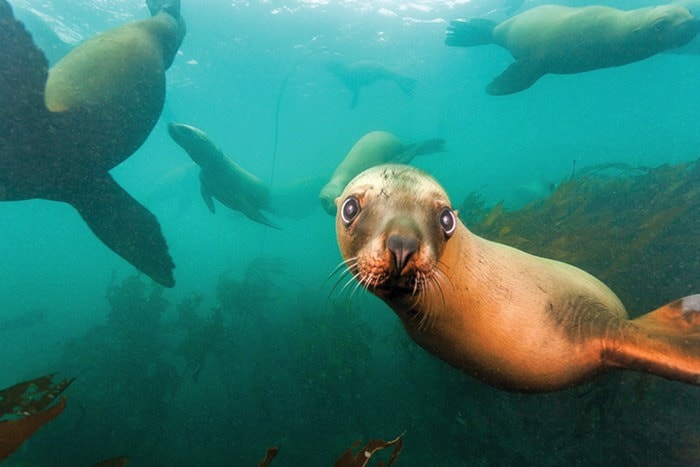Thirty metres below the surface, engulfed by kilometres of ocean and surrounded by fish and other sea life is where Ashleigh Boyd feels most comfortable.
Open water diving is like entering a different world. The diver becomes completely weightless, breathing underwater and kicking through the dark water, deeper and deeper into the depths of the ocean. The only sounds come from the motor of nearby boats or the echo of a bang in the distance.
It’s an environment that Boyd, a Victoria resident and dive instructor with Ogden Point Dive Centre, has quickly grown to love.
“I’m a big thing diver, seeing manta rays or sharks. I love looking for the small things,” she said.
“I love being underwater and just looking around. I just enjoy being underwater,” said Boyd, adding she suffers from cerebral palsy, which affects her legs.
“When I’m underwater it’s no issue, I’m exactly the same as the person next to me. It’s very relaxing, it’s peaceful. No one can talk to you down there.”
Boyd, who is originally from Scotland and has dual citizenship between the U.K. and Canada, started open water diving in 2013. After several brief stints in post-secondary (she admits school wasn’t the right setting for her), her parents suggested she travel and join a U.K.-based charity called Reef Doctor, which focuses on the restoration of coral reefs. With the charity, she travelled to Madagascar, Africa where she helped monitor coral and fish growth, and educated local fishermen and schools on the impacts of overfishing. It was here that she also learned to dive and received her certification.
But Boyd admits she hated her first diving experience, in which she crashed head-first into an artificial coral table. But it was her second dive in which she really got hooked.
“I don’t know what changed but after my second dive, I absolutely loved it,” she said, noting she wasn’t as nervous the second time.
After leaving Reef Doctor, she then moved on to Australia to become a dive instructor and six months ago, landed in Victoria.
Over the past three years, Boyd has participated in roughly 600 dives and has encountered all types of sea life in both Madagascar and Australia’s Great Barrier Reef, including seals, manta rays, tiger sharks, whales, sea anemones, barnacles, and sea slugs.
Her most bizarre encounter came during an open water guided dive on the reef in Australia late last year. She was swimming along when suddenly a manta ray swam by being chased by a tiger shark and two king fish. The sea life circled around the group and swam off.
Since coming to the Island, Boyd said the waters off Ogden Point have the most diverse sea life in Victoria, even diving 12 to 15 metres below surface, divers can see a range of specimens from crabs to ling cod, and wolf eels to giant pacific octopus, as well as macro-organisms.
Diving is a year-round sport in Victoria, since local waters usually hover around 10 to 13 degrees Celsius, the winter months tend to have better visibility. Divers can usually see between 10 to 15 feet in front of them.
Vancouver Island’s diving community is thriving as well, with more than 10,000 divers exploring the waters around 10 Mile Point, Race Rocks and the Saanich Inlet.
Scott Stevenson has been diving for the past 20 years and has spent time in Mexico, Honduras, Panama, Belize the U.S. and Canada. Stevenson said the biggest difference between Victoria’s marine ecosystem and warmer waters is that it has more kelp as opposed to coral, which results in darker, “more intimidating” looking waters.
“It’s quite an amazing experience to go underwater when it’s quiet in a very remote place and just enjoy what very few people actually get to see, especially here because of the temperate waters,” he said, adding he dives roughly four to five times a week.
“Kelp provides a breeding ground and protection area for thousands of species. It’s why our waters are so green because there’s so much life in it. We have an incredible amount of biodiversity, which is second to none in the world.”
